#localseostrategy
Text
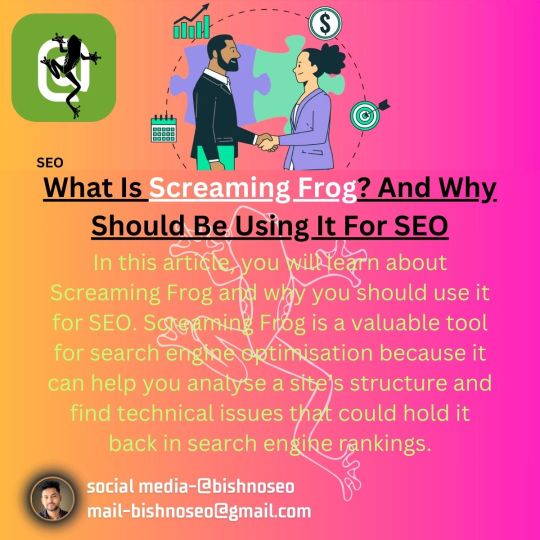
What Is Screaming Frog? And Why Should Be Using It For SEO
In this article, you will learn about Screaming Frog and why you should use it for SEO. Screaming Frog is a valuable tool for search engine optimisation because it can help you analyse a site’s structure and find technical issues that could hold it back in search engine rankings.
#amittiwari#amittiwariseo#technicalseo#screamingfrogtips#howtousescreamingfrog#screamingfrog#seotutorialforbeginnersstepbystep#seotutorial#surferseotutorial#screamingfrogseospidertutorial#localseostrategy#localseocitations#surferseocontenteditor#screamingfrogseospider#seospider#screamingfrogseospiderreview#screamingfrogseospiderpricing#screamingfrogseospidertool#localSEO#rankandrent#localseotactics#localseogooglemybusiness#surferseo#surfer
0 notes
Text
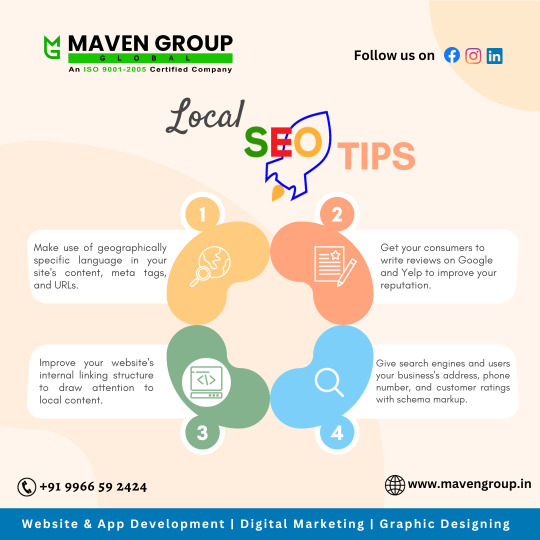
An search engine optimization approach that makes your company more noticeable in Google local search results. Local SEO can be advantageous for any company that operates locally or serves a specific region.
For More details & Information
Phone: +91 99665 92424
Visit Us: www.mavengroup.in
#localseoexpert#localseostrategy#contentmarketingexpert#mavengroupglobal#digitalmarketingagency#searchengineoptimizationservices#seo#SearchEngineOptimizationCompany#onlinemarketingexpert#seoagency#MGG#branding#localseomarketing
0 notes
Photo
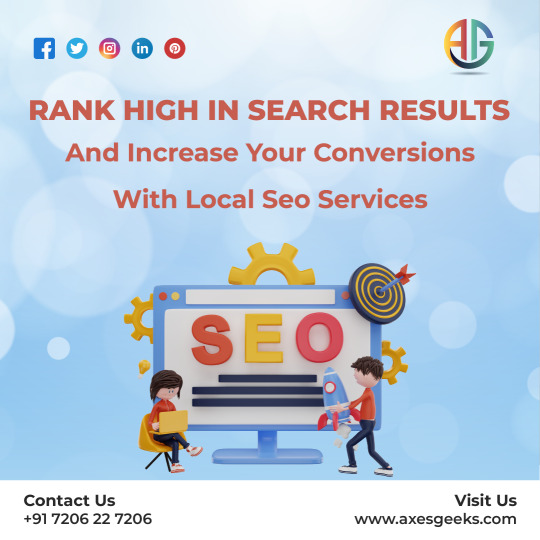
Are you a local business looking to attract more customers?
Local SEO can help! Optimizing your online presence for location-based searches can increase your visibility and reach people searching for businesses like yours in your area.
If you want to boost your local SEO and get your business noticed by customers in your community.
Get a FREE Quote Today!
https://www.axesgeeks.com/
☎ 07206227206
[email protected]
#AxesGeeks#digitalmarketing#seo#searchengineoptimization#localseomarketing#localseoservices#localseostrategy#localseo#localbusiness#increasevisibility
0 notes
Text
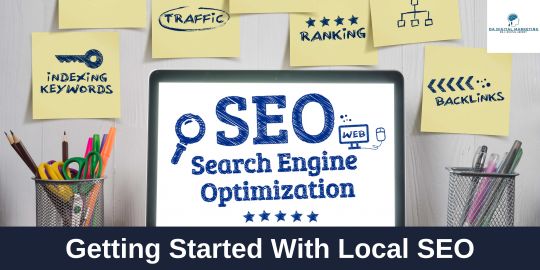
Want to know more about Local SEO for your business?
Local SEO means enhancing your site for local searches. It refers to all SEO activities that are done with the belief of ranking in search results for specified geographical locations.
To Know More...
Visit Our Website: https://dadigitalmedia.blogspot.com/
Email Us: [email protected]
Contact Us At: +91 9366811320
#localseo#localseotips#localseorank#localseoexpert#localseoagency#localseostrategy#localseomarketing#seo#searchengineoptimization#digitalmarketing#dadigitalmedia
0 notes
Video
Hello Neighbour! Are you ready to find out our next step?
Step 17 Local SEO Strategy.
Number #1 Dental SEO agency in Australia.
Call Now for more details
☎ 0415 188 959
#digidental#seo#searchengine#searchengineroptimization#dentalseo#seofordentist#seostrategy#localseo#localseostrategy#dentalseoagency#marketing#dentalmarketing#seoagency#marketingagency#marketingstrategy#websitetraffic
0 notes
Text
Local SEO: Strategies to Dominate Your Local Market | SEOCurrent
Unlock the power of local SEO with SEOCurrent's video. Dive into effective strategies tailored for dominating your local market. Gain insights, optimize your online presence, and watch your business thrive in the heart of your community. #LocalSEO #SEOCurrent
youtube
#DigitalMarketingSuccess#marketing#keywordoptimization#seostrategy#seocurrent#youtube#LocalSEO#LocalBusinessOptimization#OnlineVisibility#LocalSEOStrategies#Youtube
0 notes
Text
Unveiling the Power of Google Local Pack

Google Local Pack is a powerful game-changer in local search, providing businesses with a unique opportunity to increase their visibility and drive foot traffic or website visits. This comprehensive guide will delve into the intricacies of Google Local Pack, from what it is, how it works, and strategies for optimizing your presence. With this guide, you will be able to confidently navigate the ins and outs of Google Local Pack and leverage its benefits to boost your business read more here
0 notes
Text
On-Page SEO Optimization Techniques: A Guide for Small Business in Northern Va
If you’re a small business owner in Northern Virginia, you know how important it is to have an online presence. But with so much competition, it can be hard to get noticed.
That’s where on-page optimization techniques can help!
Table of Contents
What is On-page SEO?
On-Page SEO vs Technical SEO vs Off-Page SEO
10 Essential On-Page Optimization Factors
1. Title Tag Optimization
2. Meta Description Optimization
3. Header Tag Optimization
4. Keyword Optimization
5. Image Optimization
6. Internal Linking
7. Content Optimization
8. URL Optimization
9. Mobile Optimization
10. Page Speed Optimization
Conclusion
Frequently Asked Questions (FAQs)
What is the Impact of On-Page SEO on My Business?
How to Measure the Success of On-Page SEO Efforts?
How Can I Get Help with On-Page SEO in Northern VA?
What is geotagging for local search? (Redo)
What is E-A-T?
What is On-page SEO?
On-page SEO (sometimes called on-site SEO) is a powerful tool to help you improve your visibility in search engine results (SERPs) and attract more customers. Optimizing your website’s content and structure ensures the right people see it.
This article will discuss the basics of on-page SEO and how it can help you get the most out of your online presence.
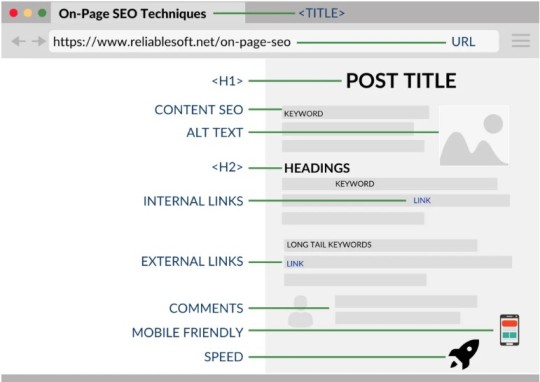
Source
On-Page SEO vs Technical SEO vs Off-Page SEO
Technical SEO, on-page SEO, and off-page SEO are all important aspects of SEO. By optimizing all three aspects of your website, you can improve your chances of ranking high in search results.
Here is a comparison between technical SEO, on-page SEO, and off-page SEO in a table format with examples:
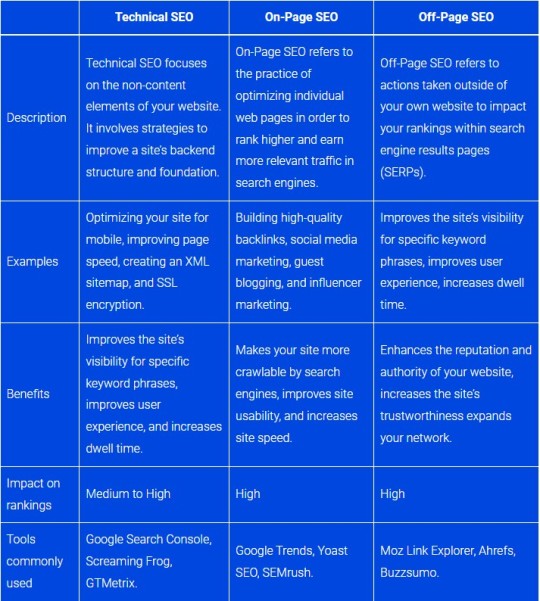
10 Essential On-Page Optimization Factors
1. Title Tag Optimization
The title tag is the text that appears at the top of your web page and is the text that appears as the clickable link in search engine results pages (SERPs).
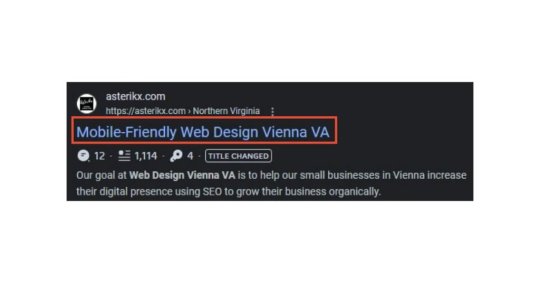
Title Tag Optimization Strategy
Be concise: Keep the title tag under 60 characters, as search engines typically truncate longer titles.
Use relevant keywords: Include relevant keywords in the title tag to tell search engines about the page.
Be descriptive: Use clear and descriptive language to provide page information.
Be unique: Ensure each title tag is unique to avoid confusion and duplication.
Include branding: Consider including the brand name in the title tag to improve brand recognition and trust.
Consider the user: Consider what they want to see and what would compel them to click on the page.
Use proper grammar and punctuation: Ensure that the title tag is grammatically correct and uses proper punctuation.
Avoid keyword stuffing: Do not stuff the title tag with irrelevant or excessive keywords, as this can negatively impact search engine rankings.
Use pipe symbols or hyphens: Consider using pipe symbols or hyphens to separate different elements of the title tag, such as the page title and brand name.
This is an essential on-page optimization technique and SEO ranking factor.
2. Meta Description Optimization
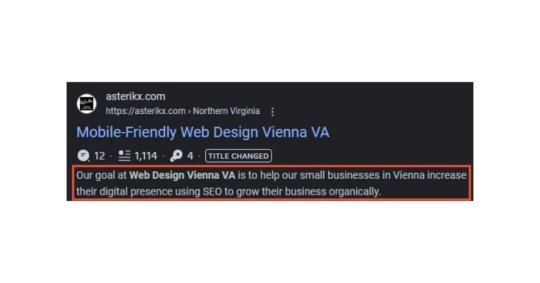
A well-written meta description can improve your click-through rate (CTR) by giving searchers a preview of what they can expect to find on your page. To optimize your meta descriptions, you should aim to make them as follows:
Compelling: Write your meta descriptions in a way that captures the searcher’s attention and encourages them to click through to your page. Use persuasive language and highlight the unique value proposition of your page.
Informative: Accurately summarize the content of your page and give searchers a clear idea of what they can expect to find.
Keyword-rich: Use relevant keywords in your meta description, but don’t overdo it. Ensure your keywords are used naturally and don’t detract from the readability of your narrative.
It’s noteworthy that meta descriptions don’t directly impact search engine rankings. However, they can indirectly affect your SEO efforts by improving your CTR, a factor that search engines consider when determining rankings.
Optimizing your meta descriptions is an essential on-page SEO optimization technique that can help improve your website’s CTR and attract more organic traffic.
3. Header Tag Optimization
Header tags are HTML tags that are used to format text and provide structure to your web page.
The H1 tag is typically used for the page’s main heading, while H2 and H3 tags are used for subheadings and further subheadings. Using header tags, you can make your content easy to read and scannable for users and search engines.
In addition to helping organize your content, header tags also allow you to include target keywords. By having these keywords in your headers, you can help search engines understand your page’s main topics and themes to help improve your search engine rankings.
However, avoiding overusing header tags or including irrelevant keywords in your headers is essential. This can hurt your SEO efforts and make your content less readable for users.
Header Tag Optimization Strategy
Use header tags (H1, H2, H3) to structure your content and make it easy for users and search engines to read.
Include your target keywords in your header tags, but don’t stuff them or make them sound unnatural.
Ensure your H1 tag is unique and describes the page’s main topic.
Use H2 tags to break down your content into subtopics and H3 tags for further subtopics.
Keep your header tags short and to the point, ideally between 15-70 characters.
Use a consistent hierarchy for your header tags throughout your website.
Don’t use header tags for styling, such as making text larger or bold. Use CSS for styling instead.
Ensure your header tags are correctly nested, with H2 tags following H1 tags and H3 tags following H2 tags.
Use header tags to emphasize important points in your content, such as benefits, features, or key takeaways.
Use header tags to improve the accessibility of your content for users with visual impairments by providing a clear and organized structure.
4. Keyword Optimization
The goal of keyword optimization is to help search engines understand your content’s main topics and themes, which can help improve your search engine rankings.
To optimize your keywords, you should conduct keyword research to identify relevant terms and phrases your target audience is searching for.
Once you’ve identified your keywords, use them naturally throughout your content, including in your headings, subheadings, body text, and image alt tags.
Focus on creating high-quality, unique content that provides value to your audience. Write content for humans first and search engines second. Aim to use keywords in a way that feels natural and doesn’t detract from the readability or quality of your content.
Keyword Optimization Strategy
Research and choose relevant keywords: Conduct thorough keyword research to identify keywords relevant to your business and frequently searched by your target audience.
Use primary and secondary keywords: Use your primary keyword in the title tag, meta description, URL, and throughout the content. Use secondary keywords in subheadings, image alt tags, and other page areas.
Avoid keyword stuffing: Do not overuse keywords in your content, as search engines can see it as spammy and harm your rankings. Aim for natural and appropriate use of keywords.
Use long-tail keywords: Long-tail keywords are phrases with three or more words that are more specific and targeted. They can help you rank for niche searches and attract high-quality traffic.
Incorporate keywords in anchor text: Use your targeted keywords in the anchor text of internal links to help search engines understand the context and relevancy of your content.
Optimize for voice search: With the increasing popularity of voice search, optimizing for natural language queries and long-tail keywords people are likely to use in voice searches is essential.
Analyze and refine: Continuously analyze and refine your keyword strategy based on search volume, competition, and the performance of your existing keywords.
Keyword optimization is essential for on-page optimization techniques to improve a website’s visibility and attract more organic traffic. Using relevant keywords in a natural and meaningful way can help search engines understand your content’s main topics and themes while providing value to your audience.
5. Image Optimization
Optimize images with descriptive filenames, alt tags, and captions to include keywords. Pictures add value to your content, making it more engaging for your audience. However, search engines can’t interpret images independently, so optimizing them for SEO is essential.
To optimize your images, you should follow these strategies:
Use descriptive filenames: When uploading images, use descriptive filenames that contain relevant keywords related to the image content. For example, “dog-walking-services-northern-virginia.jpg” is a better filename than “IMG_1234.jpg”.
Optimize image size: Large image files can slow down your website, so optimizing your images for web use is essential. Use image compression tools like TinyPNG or JPEGmini to reduce the file size without sacrificing image quality.
Use alt tags: Alt tags provide a text description of an image that appears when the image cannot be displayed. Use relevant keywords in your alt tags to improve the accessibility and SEO of your photos.
Include captions: Captions provide additional context for your images and can improve engagement. Be sure to use relevant keywords in your image captions.
Use image sitemaps: Image sitemaps provide search engines with additional information about your images, such as the URL, title, and caption. Be sure to include image sitemaps in your comprehensive sitemap to improve your website’s SEO.
Choose the correct file format:��Different file formats are better suited for different types of images. For example, JPEG is best for photographs, while PNG is best for graphics with transparent backgrounds.
Host images on your domain: Hosting images on your domain instead of third-party sites can improve your website’s load times and SEO.
6. Internal Linking
Internal linking of relevant pages within your website will help search engines understand your site structure. Internal linking can also improve the user experience by enabling users to navigate your website and find related content.
Follow these strategies to optimize internal linking:
Use descriptive anchor text: Anchor text is the text that appears as a hyperlink. It gives readers a clear idea of where they’ll go if they click the link. Avoid generic text like “click here” or “read more.”
Link to relevant pages: Link to pages pertinent to the content of the page you’re linking from. To help search engines understand the relationship between your pages and can improve your website’s visibility in search engine rankings.
Limit the number of internal links per page: While internal linking is important, too many links on a single page can hurt your SEO efforts. Limit the number of internal links per page to avoid overwhelming users and search engines.
Use a logical site structure: Organize your website’s content into a logical structure that makes it easy for users and search engines to navigate by including categories and subcategories and creating a hierarchy of pages.
Use a variety of anchor texts: Don’t use the same anchor text for all your internal links. Mix it up with variations and synonyms to avoid over-optimization.
Prioritize important pages: Link to your most important pages more frequently than less critical pages. To help ensure essential pages receive the most link equity and improve search engine rankings.
Use breadcrumbs: Breadcrumbs are a navigation aid that can help visitors understand where they are on your site and how to navigate to other pages. They can also help search engines understand the structure of your site.
Use internal links to promote conversions: Use internal links strategically to encourage conversions, such as linking to product pages or contact forms.
Overall, internal linking can improve your website’s visibility and user experience. By linking to relevant pages within your website with descriptive anchor text, you can help search engines understand your site structure and improve your website’s visibility in search engine rankings.
7. Content Optimization
Content optimization is creating high-quality, unique content that includes relevant keywords and provides value to your audience. Content optimization must comply with Google’s E-A-T or expertise, authoritativeness, and trustworthiness to help search engines understand your content’s main topics and themes to improve rankings and attract more organic traffic.
Follow these strategies to optimize your content:
Conducting keyword research: Your content must be relevant and engaging for your target audience. By identifying the keywords and phrases your audience is searching for, you can integrate them naturally into your content. To improve your visibility online and attract more prospects.
Create high-quality, unique page content: Write original, informative content that provides value to your audience. Avoid duplicate content or content copied directly from other sources.
Use headings and subheadings: Organize your content into logical sections by including keywords in your headings (H1, H2, H3, H4, and so on) to help search engines understand your content’s main topics and themes.
Use various content types: You want your visitors to get the information they need but want to make it engaging and appealing. You can do that through creative writing, images, videos, and infographics.
Ensure content is easy to read: Making your content easy to read is vital for engaging your audience and conveying your message effectively.
To ensure readability,
Break up large blocks of text into smaller, more manageable chunks.
Use headlines and subheadings to organize your content.
Use simple words and short sentences.
Use bullet points or numbered lists to make your content easier to scan.
Include visuals and images where appropriate to break up the text.
Use bold or italicized words to emphasize key points.
Include white space to make it easier on the eyes.
Use high-quality fonts that are easy to read.
Keep paragraphs short, between 2-4 sentences.
Use active voice instead of passive voice.
8. URL Optimization
A URL is the web address that appears in the address bar of a web browser, and optimizing it can help search engines and users understand the page’s content.
For example, to rank for a query regarding (on-page SEO optimization) it would help with ranking to include it in the URL (like https://example.com/on-page-seo-optimization-northern-va)
At one point, keywords in URLs were a significant factor in Search Engine Optimization. People would carefully select keywords to include to improve their website’s ranking in search engine results.
However, Google’s algorithm has changed, and keywords in URLs have much less impact. This doesn’t mean they are unimportant, but not as important as they used to be.
So it would help if you didn’t prioritize them but shouldn’t ignore them altogether.
To optimize your URLs, follow these strategies:
Conduct keyword research: Before creating content, research relevant keywords and incorporate them naturally into your content.
Use descriptive keywords: Include descriptive keywords that accurately reflect the page’s content in your URLs. To help search engines understand the relevance of your page to a specific search query.
Write for your target audience: Write content that resonates with them and addresses their needs and pain points.
Use hyphens to separate words: Search engines can quickly parse hyphens and understand each word as a separate entity.
Use clear and concise language: Avoid technical jargon or overly complex language. Use simple, easy-to-understand language accessible to a wide range of readers.
Use headers and subheaders: Use headers and subheaders to break up your content and make it easier to read. To help search engines understand the structure of your content.
Keep URLs short: Shorter URLs are easier for users to remember and share.
Avoid special characters: Avoid using special characters, such as “&” or “?” in your URLs, as they confuse search engines and make it more complicated for them to crawl and index your site.
Use lowercase letters: Uppercase letters can confuse and cause errors when users type in your URL.
Incorporate visual aids: Use images, videos, infographics, and other visual aids to make your content more engaging and informative.
Make it shareable: Include social sharing buttons and encourage readers to share your content on social media.
Monitor and update your content: Regularly review and update content to ensure it remains relevant and accurate.
9. Mobile Optimization
Ensure that your website is mobile-friendly and optimized for mobile devices.
Mobile optimization is an on-page SEO technique that ensures your website is mobile-friendly and optimized for mobile devices. With the increasing use of smartphones and tablets to access the internet, it’s crucial to have a website optimized for mobile devices to provide a positive user experience and improve search engine rankings.
Optimize for mobile: To reach a larger audience optimizing your content for mobile is essential.
To ensure your content is easily accessible and readable on mobile devices;
Make sure your website is mobile-friendly: The first step to optimizing your website for mobile is to ensure it is mobile-friendly. It uses a responsive design that is easy to navigate on mobile devices.
Optimize for mobile speed: Mobile users expect fast loading times. Ensure your website loads quickly on mobile devices by optimizing images, using a caching plugin, and minimizing the use of plugins.
Use a mobile-friendly layout: Ensure your website layout is optimized for mobile devices. Use a simple and clean design, ensure buttons are easily clickable, and avoid using pop-ups that could interfere with user experience.
Use mobile-friendly content: Make sure your website content is easy to read on mobile devices. Avoid using long paragraphs; use shorter sentences and bullet points to break up the content.
Use mobile-specific keywords: People use different keywords when searching on mobile devices. Research mobile-specific keywords and incorporate them into your website content.
Leverage local search: Mobile users are more likely to search for local businesses. Optimize your website for local search by incorporating location-specific keywords, adding a Google My Business listing, and optimizing your website for Google Maps.
Use responsive images: Ensure your images are optimized for mobile devices. Use responsive images that adjust to the device’s screen size and compress the file size to reduce the load time.
Avoid using Flash: Avoid using technologies not supported on mobile devices, which can lead to a poor user experience and lower search engine rankings.
Ensure that all content is accessible on mobile devices: Ensure content like images, videos, and other multimedia content on your website is accessible on mobile devices.
Test and analyze: Use mobile testing tools to test your website’s mobile-friendliness and speed. Analyze the results and make necessary adjustments to improve your mobile SEO optimization.
To optimize your website for mobile devices, follow these best practices:
Use responsive design: Ensure your website adapts to different screen sizes and resolutions. To improve the user experience and make it easier for them to navigate your site on a mobile device.
Optimize loading times: Minimizing file sizes, compressing images, and using caching techniques will reduce server response time to load pages faster.
Use mobile-friendly navigation: Use navigation optimized for mobile devices, such as a hamburger menu or drop-down menu, to make it easier for users to navigate your site on a small screen.
Use large font sizes: Use clear, easy-to-read fonts to make your content easier to read on a mobile device.
10. Page Speed Optimization
A website that loads fast can improve the user experience, reduce bounce rates, and improve search engine rankings, as search engines tend to favor faster-loading websites.
On-page SEO tips to optimize your website to make your pages load faster:
Minimize HTTP requests: Reduce the number of files on your website using CSS sprites to combine multiple images into a single file and use browser caching to reduce the number of requests the browser makes.
Compress files: Compress files, such as images and videos, to reduce their file size and improve loading speed; use tools like ImageRecycle, compressor.io, TinyPNG, and CompressNow.
Optimize images: Reduce the file size of image files without compromising quality by using tools like Adobe Photoshop or online image compressors to optimize images.
Use a content delivery network (CDN): Use a CDN to distribute your website’s content across multiple servers, to improve loading speed by reducing the distance between the user and the server.
Minimize CSS and JavaScript: Combine multiple files into a single file, using minification to remove unnecessary whitespace and comments and placing scripts at the bottom of the page to ensure they don’t block other resources from loading.
Use a fast hosting provider: Speed is essential for your website’s success. A quality web host can help you improve page loading times, but knowing which hosts are the fastest can be challenging.
Here are some reliable and fast hosting options:
Namecheap
Cloudways
Hostinger
Liquid Web
Pressable
IONOS
GreenGeeks
SiteGround
Optimizing your website’s loading speed can improve the user experience and search engine rankings. A fast-loading website will help increase user engagement, reduce bounce rates, and improve your overall search engine visibility.
Conclusion
In conclusion, optimizing your website’s on-page SEO elements is essential in improving your page rank and boosting your SEO efforts.
Following on-page SEO best practices and using an on-page SEO checklist ensures your website is optimized for search engines and user experience. Local SEO is also crucial for on-page optimization techniques for businesses targeting specific geographic locations.
Download our On-Page SEO checklist
As an SEO professional, it’s crucial to understand the importance of on-page SEO and incorporate it into your SEO activities.
This ultimate guide to on-page SEO can provide you with a comprehensive understanding of page optimization and on-page SEO best practices. Ultimately, on-page SEO is an essential part of any SEO strategy, and paying attention to it can help your overall search engine visibility and online success.
Frequently Asked Questions (FAQs)
What is the Impact of On-Page SEO on My Business?
The impact of On-Page SEO techniques on a business is significant. Optimizing individual web pages can improve your search engine rankings, visibility, and web traffic. This can increase brand awareness, customers, and sales. It will also help improve user experience and engagement rates, leading to higher conversion rates.
How to Measure the Success of On-Page SEO Efforts?
You can measure the success of your On-Page SEO efforts using various tools and metrics tracking your website’s search engine rankings, visibility, and web traffic; monitoring your user engagement rates; and measuring your conversion rates. Additionally, you can use tools such as Google Analytics to track your On-Page SEO performance.
What is geotagging for local search?
Geotagging for local search is adding location metadata to digital content such as photos, videos, or website content to indicate the physical location where the content was created or is relevant.
Geotagging is a helpful tool for local businesses as it helps search engines understand the location relevance of the content and can improve the visibility of the content for users searching for local businesses or services in a specific location.
For example, a restaurant might geotag its photos and website content with the restaurant’s physical address, allowing search engines to understand that the content is relevant to people searching for restaurants in that area.
Overall, geotagging is an essential aspect of local search optimization and can help improve a business’s online visibility and local search rankings.
What is E-A-T?
E-A-T stands for Expertise, Authoritativeness, and Trustworthiness, and it is a set of guidelines that Google uses to assess the quality of web pages and websites. E-A-T is an important SEO factor in determining search engine rankings as it helps Google provide its users with high-quality and trustworthy content.
The 3 components of E-A-T
Expertise: To demonstrate expertise, content creators should have relevant qualifications, experience, or expertise in the topic they write about.
Authoritativeness: Content creators should have a strong industry reputation and positive reviews or testimonials from other reputable sources to demonstrate authoritativeness.
Trustworthiness: Websites should provide accurate and up-to-date information with sources for any claims made in the content to demonstrate reliability.
Google uses E-A-T to help determine the quality of a website or page, and it is crucial for websites that provide health, financial, or legal information. To improve E-A-T, website owners should focus on creating high-quality content that is accurate, up-to-date, and written by experts in their field. They should also focus on building a solid reputation and providing sources to back up any claims made on their website.
#OnPageOptimization#SmallBusinessSEO#SEOForSmallBiz#LocalSEOStrategies#DigitalMarketingTips#WebsiteOptimization#ContentMarketingForSmallBusiness
0 notes
Text
Best Practices For Local SEO Strategies
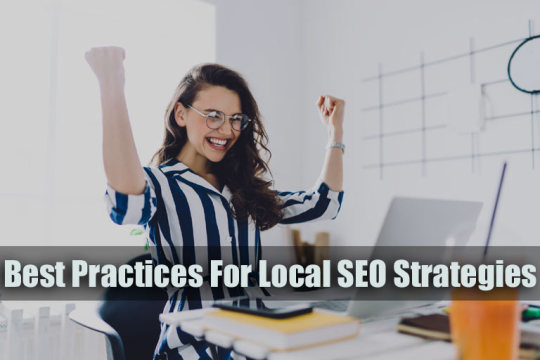
What are the best practices for local SEO to create great SEO strategy?
Do you want to dominate local search rankings and attract more customers to your business?
The key to success lies in local SEO. But what exactly is local SEO, and how can you optimize your online presence for better search engine visibility?
In 2023, local SEO will remain a critical aspect of digital marketing, and businesses that pay attention to it risk being left behind.
But with so much competition in local search results, how can you rise above the rest?
By following the best practices for local SEO in 2023, you can improve your online presence, drive more traffic to your website, and ultimately increase your revenue.
Read the full article here:
Best Practices For Local SEO Strategies
0 notes
Text
BEWARE {Google Maps} Google Business Profile Suspension
Ranking in Google Maps Fast - DO THIS to DOUBLE YOUR LEADS in 7 Days (2023) 🚀 #LocalSEO #Google3Pack
Links:
My Affiliate link for the Local Falcon Grid Program:
🌐SEO GRID PROGRAM has an affiliate code below
◉ https://localfalcon.com?fpr=bret86
◉ Open.ai (Chat GPT)
◉ https://citationvault.com/
◉ https://moz.com/learn/seo/citations-by-category
◉ https://www.fiverr.com/
Free local SEO audit
Email me: [email protected]
☑️ Donation Links
◉ http://bn.plus/tddUqg
◉ https://paypal.me/mindsaw
◉ https://commerce.coinbase.com/checkout/1919cea5-fb39-4ad6-8565-a7c3bb2246ad
Please give us a 5 star review ⭐⭐⭐⭐⭐
https://g.page/mindsaw/review?gm
LocalSEO #GoogleMaps #Google3Pack #GoogleLocalSearch #LocalSEOTutorial #LocalSEOTips #GoogleMapsRanking #LocalSEOStrategy #LocalBusinessSEO #SmallBusinessSEO
How to Get Your Business Noticed on Google Maps
In today's digital age, visibility on Google Maps is crucial for businesses. Here's how to stand out:
Claim Your Listing: Start by claiming your Google My Business (GMB) listing. This ensures you have control over your business details.
Optimize Information: Ensure your business name, address, phone number, and hours are accurate. Add high-quality photos and a compelling description.
Collect Reviews: Encourage satisfied customers to leave positive reviews. Respond promptly to feedback, both positive and negative.
Use Local Keywords: In your GMB description, include keywords relevant to your local area.
Stay Active: Regularly update your listing with posts, offers, and events.
By following these steps, you'll enhance your business's visibility and attract more customers.
💌 CONNECT WITH MINDSAW 💌
Twitter ➤ https://twitter.com/mindsaw360
Pinterest ➤ https://pinterest.com/mindsaw360
Instagram ➤ https://instagram.com/mindsaw360
Facebook ➤ https://facebook.com/mindsaw
Mindsaw
900 South Ave, Staten Island, NY 10314, United States
(718) 227-2300
https://mindsaw.com/
https://g.page/mindsaw?share
If you are trying to rank in google maps and need help please email me [email protected]
0 notes
Text
Maximizing Your Online Presence: Google My Business Optimization
Introduction:
https://lnkd.in/gy4QNc44
Establishing a strong online presence in the digital age is crucial for businesses to thrive. Google My Business (GMB) is a powerful tool that allows businesses to enhance their online visibility and attract potential customers. This article will explore the importance of optimizing your Google My Business profile and how it can elevate your brand on the digital landscape.
☑ Improved Local Search Visibility:
Google My Business optimization increases your chances of appearing in local search results. By providing accurate and detailed information such as your business address, phone number, website, and business hours, you enable potential customers to find and connect with you effortlessly. This heightened visibility in local search results can significantly boost your business's online presence.
☑ Enhanced Brand Credibility:
A well-optimized Google My Business profile enhances your brand's credibility and trustworthiness. When potential customers search for your business, they can access valuable information such as customer reviews, ratings, and photos, offering them insights into the quality of your products or services. Positive reviews and high ratings can instill confidence in potential customers and encourage them to choose your business over competitors.
☑ Engaging Customer Interaction:
Google My Business allows businesses to interact with their customers directly through features like messaging and reviews. You demonstrate excellent customer service and build trust by promptly responding to customer inquiries, addressing concerns, and engaging in positive interactions. Engaging with customers on this platform also provides an opportunity to showcase your brand's personality and create a positive impression.
☑ Showcasing Visual Content:
Google My Business enables you to showcase visual content such as photos and videos, giving potential customers a glimpse into your business and what you offer. High-quality visuals can capture attention, showcase your products or services, and entice customers to choose your business. Visual content plays a crucial role in creating a favorable first impression and driving customer engagement.
☑ Valuable Insights and Analytics:
Google My Business provides valuable insights and analytics that can help you understand your audience better. You can track metrics such as how customers found your business, the number of clicks to your website, and the types of actions users took on your profile. These insights enable you to make informed decisions, optimize your marketing strategies, and enhance the overall effectiveness of your online presence.
#LocalSEOUSA #LocalSearchOptimization #GoogleMyBusiness #LocalCitations #LocationBasedSEO #GeoTargetedKeywords #LocalDirectories #USALocalBusiness #LocalSEOExpert #LocalSEOStrategy
0 notes
Photo
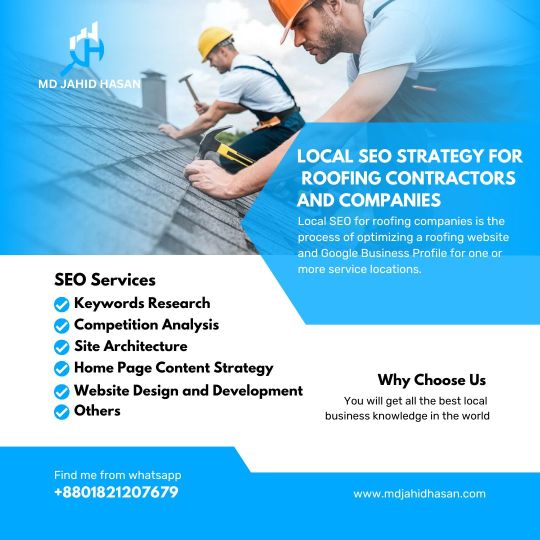
Local SEO Strategy for Roofing Contractors and Companies — MD Jahid Hasan
Local SEO strategy is essential for roofing contractors and companies to gain visibility in their local area. Roofing contractors and companies must create and execute a local SEO strategy. This involves optimizing your website for search engine queries related to your business’ services in a particular geographical area. Ensuring that your website content accurately reflects where you provide services as seo frieldy as optimizing directory listings and engaging in local marketing initiatives such as cpc click advertising can help boost visibility in local search engine results. Additionally, creating quality content related to the roofing industry and garnering reviews from satisfied customers can further bolster the SEO profile of roofing businesses.
Keywords Research
Keywords research is the process of identifying words and phrases that people use when searching the internet for information on a certain topic. This involves analyzing search engine data, determining what keywords are popular, and then optimizing content to rank for desired terms. Successful keyword research is essential to drive traffic to a website as it helps websites reach the right target audiences with their content.
- Implicit Keywords:
Here, the customers directly use keywords intending to take action immediately. So, here are the best examples of keywords with hiring intent- “Roofing Contractor in Houston Texas,” “Roof Repair,” “emergency roofing service in my area,” “Small Roof Repair Contractors” “Residential Roof Repair Near Me,” “affordable roofing company near me,” etc.
- Explicit Keywords:
Pepole are typically included in meta data and within the body of text on a webpage to give clear information as to what the page is mainly about. For example, if a web page is about ” “tips for selecting a Roof Contractor,” “what should I look for when hiring a Roof Contractor,” “how to choose roof contractor in Houston Texes,” “how can I Repair Roof Repair,” etc.
roofing contractor florida
2. Competition Analysis
- Keyword Analysis:
- On-Page factors
- Off-Page Factors:
- Technical Factors:
3. Site Architecture
- Plan Out the Hierarchy:
- Navigation:
- Header Navigation Menu
- Footer Navigation Menu
- Internal Linking Structure:
4. Home Page Content Strategy
5. Service Pages
6. Contact Us Page
7. Location Page
8. Website Design and Development
9. Plumbing Website Templates:
10. Page Speed:
- Mobile-Friendliness:
11. Strong Security:
Blog Section Strategy
Technical SEO
Google My Business Setup
Optimize for Voice Search
NAP – Local Citation
Directory Submission
Social Share
Content Marketing/ Outreach
12. Guest Posting:
Sponsorship or Partnership:
Client Testimonial/ Reviews
Adding Accreditations, Awards, and Case Studies
Your company SEO service helping person www.mdjahidhasan.com
roofing contractor in florida
roofing contractor florida
roofing contractor nyc
roofing contractor usa
roofing contractor canada
roofing companies in albuquerque
roofing companies in atlanta
roofing contractors in syracuse ny
#LocalSEO #LocalSEOStrategy #LocalSEOforroofing #LocalSEOforroofingcontractors #SEOforflooringcompany #LocalSEOExpertforroofingcompany #RoofingCompaniesNearMe
#ContractorRoof #RoofContractorsNearMe #RoofingContractorsNearMe #BestRoofingCompanyNearMe #mdjahidhasan #jahidhasan #jahid #zahidhasan
0 notes
Photo
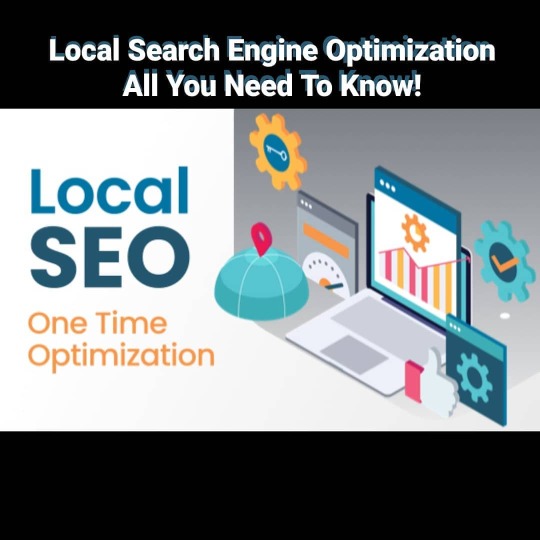
Just to claim your Google My Business listing is a good starting point, there’s much more to local SEO than that 🔍 Find out if your business needs to invest in Local SEO👇 https://bit.ly/3f5Yh6X [ LINK IN BIO ] . . . #localseo #localvocal #localseoservices #localseomarketing #localseocompany #localseotips #localseoexpert #localseorank #localseoguide #localseoservice #localseoagency #localseoranking #localseoexperts #localseotampa #localseoforsmallbusiness #localseobrooklyn #localseomarketingcompany #localseostrategy #seo #seotips #seostrategy #searchengineoptimization #seocompany #seoagency #digitalmarketing #digitalmarketingcompany #digitalmarketingagency #seoinfographic #infographic #blog
#localseo#localvocal#localseoservices#localseomarketing#localseocompany#localseotips#localseoexpert#localseorank#localseoguide#localseoservice#localseoagency#localseoranking#localseoexperts#localseotampa#localseoforsmallbusiness#localseobrooklyn#localseomarketingcompany#localseostrategy#seo#seotips#seostrategy#searchengineoptimization#seocompany#seoagency#digitalmarketing#digitalmarketingcompany#digitalmarketingagency#seoinfographic#infographic#blog
1 note
·
View note
Text

A good SEO strategy will help your business stand out on search engines. Local SEO is essential for brick-and-mortar outlets that rely on local customers to survive. Here are some local SEO tips that can help you get your business noticed by motivated local customers.
Learn more here: https://www.entrepreneur.com/article/420603
0 notes